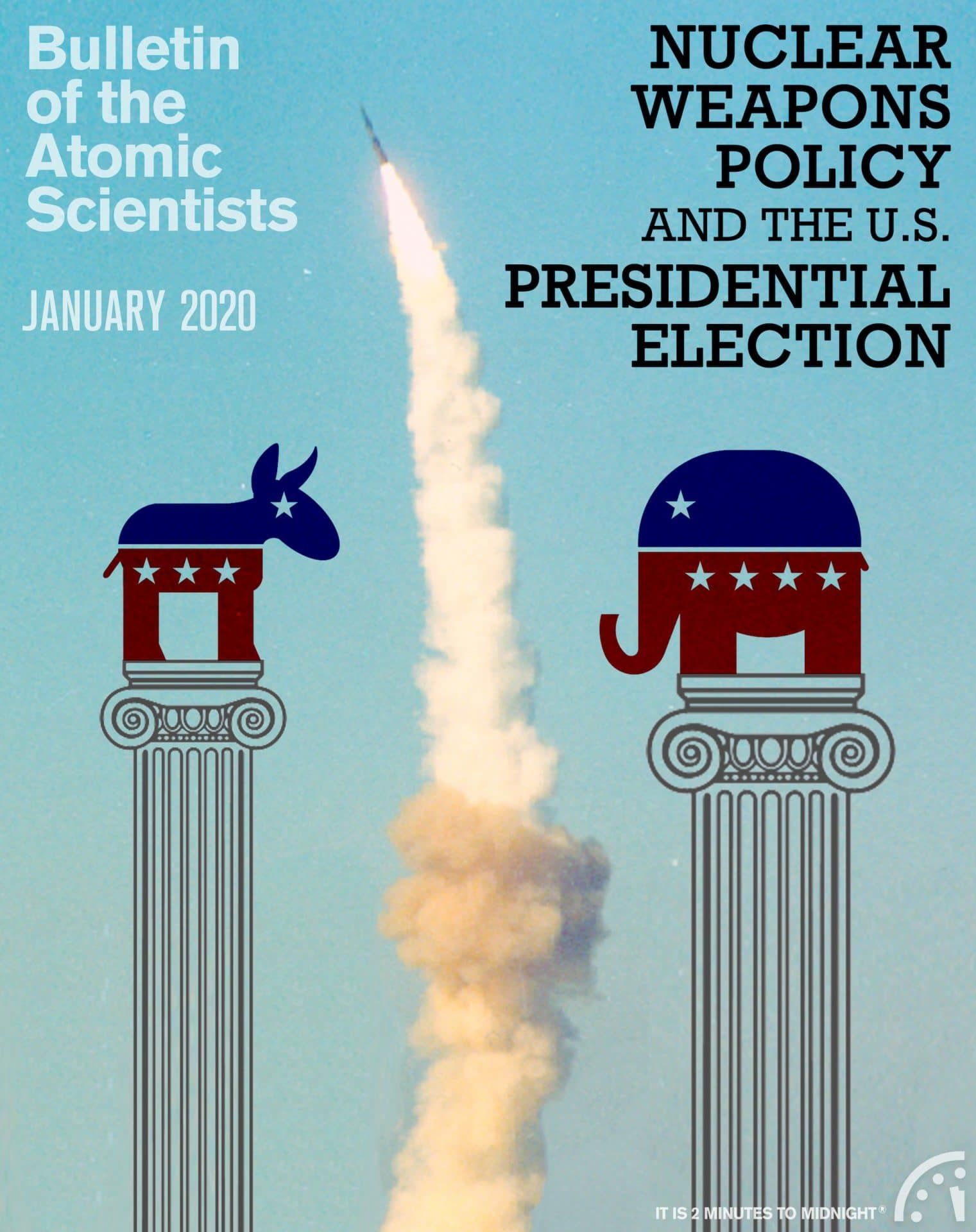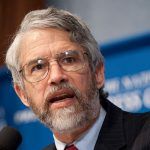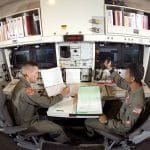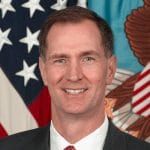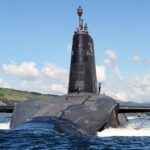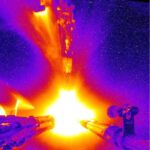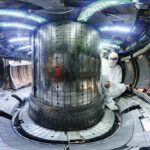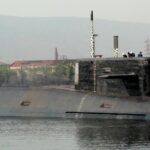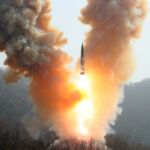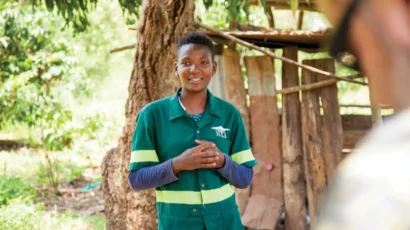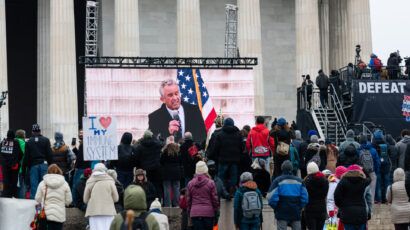What the presidential candidates should be asked about arms control and nonproliferation
By Alexandra Bell | January 1, 2020
What the presidential candidates should be asked about arms control and nonproliferation
By Alexandra Bell | January 1, 2020
Whether President Trump or one of his challengers is sworn in as president on January 20, 2021, he or she will have the complete and unchecked authority to order the use of the approximately 4,000 nuclear weapons in the active US stockpile. When running for the highest office in the land, each presidential candidate is asking the American public to trust him or her implicitly with this singular responsibility. Given that reality, it is actually quite strange that plans and policies for the management of the most destructive force ever created are rarely discussed on the campaign trail.
A few organizations, like the Council for a Livable World and the Council on Foreign Relations, have solicited nuclear policy positions from the 2020 candidates, but the reach of their information is likely limited to communities already engaged on international security matters. Despite entreaties from multiple national security-oriented organizations, with the exception of the Nov. 20, 2020 Democratic debate, television network hosts have largely avoided foreign policy questions in multi-candidate forums. Political reporters inside the Beltway and in the field rarely ask candidates about nuclear policy issues, despite the multiple nuclear crises unfolding around us in real time. There does not seem to be any acknowledgement that nuclear issues are inextricably linked to so many of the other issues being discussed.
Relations with Russia, currently at a post-Cold War low, could slide from terrible to disastrous in the absence of verifiable, bilateral controls over the US and Russian nuclear arsenals. It is hard to envision a successful economic pivot to Asia that doesn’t involve a long-term solution to the North Korean nuclear crisis and a better strategic stability relationship between the United States and China. Getting the military budget under control is impossible without taking a hard look at the nearly $1.7 trillion (at least) that the United States is planning to spend on modernizing US nuclear forces. There is no “peace in the Middle East” without constraints on weapons of mass destruction in the region. Long-term solutions to climate change are all for naught if we ignore the other existential threat to humanity: nuclear war. The list could go on, but the point is that we ignore nuclear issues at our own peril.
The next president will have to deal with many pressing questions on day one (or day 1,461), but few are as consequential as this one: Do we want to live in a world in which the number of nuclear weapons is going up or going down?
Once the next president is elected, he or she will have to make many choices about US internal nuclear policy: Should we use nuclear weapons first in a crisis? Should there be more than one person involved in the authorization of a nuclear strike? Should we make unilateral changes to our forces? And should we be deploying new low-yield nuclear capabilities? External policy choices on arms control and nonproliferation efforts will also have to be made, many of them all but immediately. The American public should be aware of the candidates’ various plans before they vote.
Despite the stated commitment to arms control and non-proliferation policies in the 2018 Nuclear Posture Reviewi, the Trump administration has mostly dismantled and dismissed standing nuclear agreements. For most of the nuclear age, US presidents have been the inheritors of their predecessors’ work to create diplomatic and legal guardrails against nuclear disaster. President Trump is on track to be the only president since Kennedy who has neither started nor completed a formal arms control negotiation in his first four years. No matter who sits behind the Resolute Desk on Jan. 20, 2021, he or she will have to scramble to triage the challenges left to them on the arms control and nonproliferation front.
The most pressing challenge will be the possible end of the New Strategic Arms Reduction Treaty (New START), which is set to expire on Feb. 5, 2021. If it has not been extended by Inauguration Day, there will be 16 days in which the US president and the Russian president can agree to extend the treaty by up to five years. With its caps on deployed warheads and delivery systems, data exchanges, and 18 reciprocal inspections per year, New START helps to enhance strategic stability for the two nations that possess more than 90 percent of the global nuclear stockpile. If the treaty is not extended, the United States and Russia will be without legally mandated restraints on their strategic nuclear arsenals for the first time in more than half a century.
The Trump administration has been reviewing the merits of a New START extension for three years now. There is still no resolution, and the outlook is bleak. Coming into the election year, the administration’s position is that China now poses a strategic threat and therefore must be pulled into a new trilateral arms control agreement with the United States and Russia. China has rejected this idea outright, pointing to its much smaller nuclear arsenal of less than 300 warheads. The administration has not demonstrated it has the capacity or motivation to change Beijing’s mind before February 2021. The second obstacle to a New START extension, the administration says, are the new Russian delivery systemsiii that President Putin unveiled in March of 2018. The administration’s logic is rather strained: It posits that—to deal with new Russian delivery systems, some of which are still only conceptual—the United States must be willing to lose all the controls over Russian delivery systems contained in New START. The logic becomes more strained when you consider that Russian officials have affirmed that two of the new systems—the Sarmat intercontinental ballistic missile and the Avangard hypersonic missile— would count under the terms of New START. The others—the Kinzhal air-launched ballistic missile, the Poseidon underwater nuclear drone, and Skyfall, the experimental (and apparently troubled) nuclear-powered cruise missile—would not and would require new negotiations that the Russians say they are willing to have.
For their part, the Russians have some issuesiv with US implementation of the agreement, but those matters could be discussed in the treaty’s Bilateral Consultative Commission. Recently, Russian officials have talked about needing six months to process an extension. There has been no evidence presented about why such a window would be needed, and it could be seen simply as a negotiating tactic. Nevertheless, if a presidential candidate believes New START extension is in the national security interest, he or she should be making that intention known clearly and audibly over the course of 2020.
While most Democratic candidates have affirmedv that they would extend the treaty as long as Russia remains in compliance, they should be asked to outline their plans for extension and how they would handle the broader strategic stability dialogue with Russia. That dialogue would need to encompass the aftermath of the collapse of the Intermediate-range Nuclear Forces (INF) Treaty and the delicate state of conventional arms control in Europe. President Trump must also be pressed to explain his positions in more depth, including how he plans to bring China into strategic stability talks.
The occupant of the White House in 2021 will also have to manage two complicated nonproliferation challenges. After a bold and unorthodox move to meet with North Korean leader Kim Jong-un a year and a half ago, the Trump administration has made little substantive progress in securing a long-term denuclearization deal. Now the North Koreans have threatened to possibly restart nuclear and long-range missile testing. In addition to covering these developments, the press should be asking each candidate how he or she would go about securing a deal that has eluded both the current and previous three Presidents.
In particular, President Trump should be asked why his efforts since Singapore have failed to produce results. He should also be asked to outline what the parameters of complete, verifiable, irreversible disarmament actually are. Other candidates should be asked about their own ideas of what would constitute a nuclear-free Korean Peninsula. When the candidates from both parties are formally nominated, their foreign policy teams will have had ample time with which to design proposals about the North Korean nuclear and missile facilities and installations that should be available for the purposes of verification and for how long. The American public should hear those proposals. Further, it will be important and necessary to ask candidates how they would go about finally ending the Korean War. That line of questioning would relate to a discussion of how a candidate would engage with regional partners on extended deterrence and the future of military exercises and deployments in the region.
Plans to deal with the North Korean nuclear program are inextricably linked to other strategic security issues in the region. Following the collapse of the INF Treaty, the US executive and legislative branches have debated American deployments of ground-launched intermediate-range missiles in the Pacific theater. That debate will continue well into the next term. The president will have to decide if such deployments could affect ongoing negotiations with North Korea and further exacerbate tensions with China; candidates should be ready and willing to opine on the matter.
The other major nonproliferation challenge for the candidates in 2020 will be the future of the Iranian nuclear program. The Trump administration’s decision to withdraw from the Joint Comprehensive Plan of Action (JCPOA) with Iran will affect the foreign policy landscape in 2021 and beyond. New administrations are, of course, at liberty to change, alter, or abandon foreign policy decisions of previous presidents. One problem: The Trump administration has seemed more interested in killing the JCPOA than in creating a new agreement. Instead of bending Tehran to its will, the Trump administration’s policies have emboldened hardliners in the country, and the hard-fought gains of the JCPOA are slipping away.
Iran’s recent moves away from the tenets of the agreement are troubling, but not surprising. Iran made a deal with six major countries—the permanent members of the UN Security Council and Germany, or the P5+1—and the Iranians were implementing the agreement faithfully. The US intelligence community and international agencies agreed. It is easy to see why leadership in Tehran would feel that it was the US withdrawal from the agreement and subsequent “maximum pressure” campaign that created the current conditions. Continued pressure now seems like the surest way to push Iran toward acquisition of nuclear weapons. Iranian leaders need look no further than North Korea to see an example of the United States treating a country with a nuclear arsenal in an entirely different way. That fact should give every candidate on the campaign trail pause. It should also motivate the press to ask candidates to speak to their plans for managing both the Iran and the North Korea crises.
As with North Korea, it is difficult to predict the exact nature of the Iran problem a year from now. No matter what happens over the course of 2020, the next American president will have to figure out how to reestablish a business-like dialogue, as military conflict with Iran is not—by the assessment of most credible experts—in the US security interest. Rebuilding anything resembling trust between Washington and Tehran will be a challenge, so patience and focus on small, achievable victories will be a necessary and invaluable feature of the process.
With any of these matters, candidates should not be allowed to speak in bromides about the value of diplomacy. As uninspiring and tedious as the press may find it to focus on technical details, they should not buy into the idea that a quick-fix grand bargain is possible with Russia, Iran, or North Korea.
Presidential candidates are asking for the privilege and responsibility of running American foreign policy, so it is completely reasonable to expect them to describe the mechanics of their proposals, even as they acknowledge that those proposals may need to change over time. Candidates can have the best policy ideas in the world, but cannot achieve new and more comprehensive arms control and nonproliferation agreements without a well-resourced intellectual infrastructure. Candidates should be able to describe how they will they account for the terrible conditions at the Department of State and how those conditions will affect our ability to engage in at least three negotiations at once. Further, how will they rebuild the arms control and nonproliferation workforce inside the government as a whole? How will they increase the budgets for nuclear policy work in a time of strained resources? How will they better connect decisions about US force posture to our disarmament obligations?
Those mechanics and logistics will also affect America’s ability to reassert a leadership role on arms control and nonproliferation issues in the context of the Nuclear Non-Proliferation Treaty (NPT). The 2020 NPT Review Conference will take place in late April and May and by all accounts, it will be a contentious affair. The Trump administration’s nuclear policy choices have undoubtedly contributed to the anticipated tensions. The NPT rarely makes it onto front pages in the United States, but the treaty is the bulwark against runaway global proliferation and as such, deserves attention and coverage. Whether before, during, or after the review conference, candidates should be asked to engage in a frank and serious dialogue about the importance of the NPT. Do nuclear weapons states that expand investments in their arsenals—as the United States, Russia, and China are—encourage more non-nuclear weapons state to consider starting their own nuclear weapons programs? All candidates should have to answer this question.
It’s a question that directly relates to a candidate’s plans for the future of arms control. To prevent further proliferation of nuclear weapons, the next administration will need to think about how to create multilateral arms control and disarmament agreements and their corresponding verification tools. Those efforts will not be successful if left only to experts inside the government. Work of this scale will require engagement with academia, civil society, private industry, and more. Candidates must be ready and willing to show how they would incorporate ideas from a larger and more diverse circle in the process of restraining the spread of the most dangerous weapons the world has known.
The future president will also need to manage the growing unease between nuclear weapons states and non-nuclear weapons states. In particular, the United States will need to assess how it has related and will relate to signatories of the Treaty on the Prohibition of Nuclear Weapons, often known as the ban treaty, since the treaty will likely enter into force in the coming years. While it is not the stated intention of ban treaty supporters to undermine any existing arms control and nonproliferation agreement, better communication and coordination can help prevent that worst-case scenario.
Offense-defense relationships—specifically, those involving national missile defense—will affect US efforts to create future strategic stability agreements. Although (or perhaps because) missile defense is a politically volatile issue, presidential candidates should be asked to explain their views on our national missile defense program and whether it merits continued investments in the absence of demonstrated efficiency. Finally, the effect of emerging technologies on strategic stability might seem like a distant issue for a candidate dealing with the tyranny of the news cycle, but it is something that must be discussed. Artificial intelligence, offensive cyber capabilities, hypersonic technology, drones, and synthetic biology all have the potential to upend half a century’s worth of nuclear policy concepts. Whether candidates have even considered preventive arms control measures in these emerging technological realms is worthy of a question or two in any appropriate venue.
Even with enhanced interest in and knowledge of nuclear policy, it is unlikely that reporters covering the 2020 presidential election will spend a significant amount of time on arms control and nonproliferation agreements. There are simply too many challenges facing the American public to expect hyper focus on any one policy area. That said, it would be extremely unfortunate to see the press ignore the subject of how we reduce nuclear risks—while gladly covering the president’s latest nickname for a rival or his challenger’s most memorable Trump put-down.
For the past half-century, American presidents and administrations of both political parties have painstakingly built an intricate collection of arms control and nonproliferation agreements. They have brought the overall number of nuclear weapons in the world from almost 70,000 to around 14,000. They have prevented the mass spread of nuclear weapons, containing nuclear weapons programs to just nine countries. They have kept fear, mistrust, and the impulsive tendencies of fallible humans in check. As we approach the 75th year of the nuclear age, these hard-won agreements are disappearing. Americans will enter the voting booth on November 3, 2020 to select a leader who will either reverse that unfortunate trend or doom us to repeat the folly of the Cold War arms race. Let’s hope those voters they have all the information they need to make the right choice.
[ii] See https://thebulletin.org/2019/06/chinese-nuclear-forces-2019/
[iv] See https://www.armscontrol.org/events/2019-07/russia-arms-control-extending-new-start-starting-over
[v] See https://www.armscontrol.org/events/2019-07/russia-arms-control-extending-new-start-starting-over
Together, we make the world safer.
The Bulletin elevates expert voices above the noise. But as an independent nonprofit organization, our operations depend on the support of readers like you. Help us continue to deliver quality journalism that holds leaders accountable. Your support of our work at any level is important. In return, we promise our coverage will be understandable, influential, vigilant, solution-oriented, and fair-minded. Together we can make a difference.
Keywords: INF, New START, arms control, nonproliferation
Topics: Nuclear Weapons

